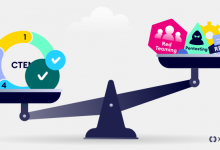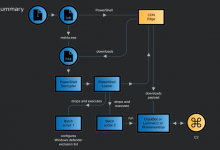Threat Intelligence And Mitigation Strategies
Between 2024 and 2031, the global cyber threat intelligence market is poised for growth, with North America and Europe at the forefront. However, Forbes reports alarming cybersecurity stats—560,000 daily malware instances and 1248 weekly cyberattacks per organization. In 2024, ransomware 2.0, info-stealer malware, and cloud malware injection amplify threats. Ransomware on SAAS infrastructure poses challenges in lateral movement for attackers.
While SAAS providers shoulder security responsibility, customers can reduce risks through mitigation strategies like multi-factor authentication. The AI/ML hype of 2023 faces scrutiny in 2024, especially in phishing defense, where traditional methods and threat intelligence management prove crucial.
Automation, with AI, shows promise in streamlining tasks like extracting intel from reports using Natural Language Processing (NLP). The Cyber Express unfolds the evolving world of threat intelligence and mitigation strategies in 2024, stressing the need for a global cybersecurity approach.
Mitigation Strategies for 2024: A Paradigm Shift
To fight the ongoing cybercrimes, organizations need to understand and embrace cybersecurity as part of the organization and not as a subsidiary domain. Justin Ong, APAC CISO & CPO at Panasonic Asia Pacific Pte. Ltd, emphasizes the crucial role of threat intelligence in the cybersecurity domain and its significance in developing effective mitigation strategies.
Threat intelligence involves the systematic collection, analysis, and dissemination of information concerning cyber threats and vulnerabilities. It goes beyond a mere compilation of data; it enhances situational awareness, enabling informed decision-making and the development of proactive cybersecurity measures.
“Threat intelligence helps companies understand the tactics, techniques, and procedures (TTPs) employed by threat actors, the vulnerabilities they exploit, and the indicators of compromise (IoCs) associated with their activities. By leveraging threat intelligence, companies can proactively defend against cyber threats, identify potential risks, and respond promptly to security incidents”, says Justin.
A prevailing misconception is the belief that acquiring advanced cybersecurity tools alone is sufficient for robust cybersecurity. While tools are undeniably essential, understanding the world of cybercrime is equally crucial.
This understanding, combined with robust playbooks on how to deal with incidents, forms the backbone of a resilient cybersecurity posture. Moreover, some companies fall into the trap of viewing threat intelligence as a one-time task. In reality, it demands continuous updates and adjustments to remain effective against hackers. Automating threat intelligence feeds into defense systems and adds an extra layer of protection.
Another misconception is the exclusive focus on external threats, neglecting the equally perilous possibility of insider threats. Threat intelligence should encompass both external and internal threats, making employee screening and background checks imperative before the commencement of employment.
Overcoming the fear of sharing threat intelligence due to concerns about revealing vulnerabilities is crucial. Collaborative information sharing strengthens the overall cybersecurity ecosystem, and many Original Equipment Manufacturers (OEMs) are now willing to collaborate for the greater good, ensuring intelligence sharing improves cyber defenses against the myriad adversaries in the digital realm.
Adapting to New and Emerging Threats: Insights from Justin Ong
Looking ahead, Justin Ong anticipates several trends and advancements in threat intelligence, necessitating corresponding adaptations in organizational strategies. The increased use of automation and artificial intelligence in processing and analyzing large volumes of threat data for quicker and more accurate decision-making is on the horizon.
Modern Extended Detection and Response (XDR) and Network Detection and Response (NDR) products are increasingly incorporating AI into their platforms. These systems can autonomously take necessary actions when deviated behavior is detected, representing a significant leap forward in cybersecurity capabilities.
“As the Internet of Things (IoT) and Operational Technology (OT)/ Industrial Control Systems (ICS) environments expand, threat intelligence will need to adapt to address the unique challenges posed by these interconnected systems. Many of the OT vendors have already started partnering with solution providers to onboard and certify their products for use on these sensitive networks”, added Justin.
Despite the rise of automation, the importance of skilled human analysts will remain critical for interpreting nuanced threat intelligence and making strategic decisions. The shortage of skilled cybersecurity professionals remains a critical issue, requiring concerted efforts to bridge the gap.
Strategic Responses and Predictions for 2024
In anticipation of these changes, organizations should focus on enhancing their analytical capabilities, fostering collaboration within the cybersecurity community, and integrating threat intelligence into their overall risk management strategies.
Cybersecurity discussions must take a prominent place in Governance, Risk, and Compliance (GRC) discussions at the board level. Regular training and updating of cybersecurity personnel on emerging threats and technologies are essential to staying ahead of cybercriminals.
Ransomware, identified as an ongoing problem for organizations worldwide, is expected to persist and grow in size and complexity in 2024. Collaborations and partnerships between ransomware families and other threat actors through underground forums will contribute to this growth.
Socially engineered tactics, designed to manipulate and deceive individuals into compromising their devices or personal information, are anticipated to become even more sophisticated and targeted. This increasing sophistication poses challenges for both victims and security tools, making detection and identification more challenging.
The Trellix Advanced Research Center’s 2024 Threat Predictions report highlights the growing complexity of the cyber world. John Fokker, Head of Threat Intelligence at Trellix Advanced Research Center, notes, “Cybercriminals from ransomware families to nation-state actors are getting smarter, quicker, and more coordinated in retooling their tactics to follow new schemes — and we don’t anticipate that changing in 2024.”
Breaking away from escalating attacks requires industries to embrace a cybersecurity strategy that is constantly vigilant, actionably comprehensible, and adaptable to new threats.
Cyble’s Cyber Threat Intelligence: A Holistic Approach
Cyble acknowledges the extensive, intricate, and changing nature of security threats. Complete protection from all potential external threats is unrealistic. Cyble’s Cyber Threat Intelligence offers insight into the activities of potential attackers and Threat Actors, allowing organizations to determine, prioritize, and track threats that pose a risk.
The process involves gathering information from numerous sources, including the Surface, Deep & Dark Web, and covert communication channels. By combining various data sources and adding context, Cyble’s intelligence packages provide a comprehensive view of the dark web world, especially for new and emerging ransomware groups, enabling quick and informed decision-making.
Integration with security tools allows for the querying of Indicators of Compromise (IOCs) to correlate with threat alerts, uncover Personal Identifiable Information (PII) exposures, or gain insight into critical vulnerabilities and exploits.
To Wrap Up
To sum up, the year 2024 will be a pivotal period for threat intelligence and mitigation strategies. In light of the recent escalation involving ransomware, hacktivists, and novice hacker groups, organizations and cybersecurity agencies must prioritize threat intelligence and mitigation Strategies, fostering collaboration, leveraging automation, and mitigating the upcoming threats.
The interplay of technology, human expertise, and strategic foresight will be instrumental in outsmarting and outmaneuvering cybercriminals in the coming year. The integration of threat intelligence into the very fabric of cybersecurity practices is not just a choice; it’s a necessity for the digital guardians of today and tomorrow.
Media Disclaimer: This report is based on internal and external research obtained through various means. The information provided is for reference purposes only, and users bear full responsibility for their reliance on it. The Cyber Express assumes no liability for the accuracy or consequences of using this information.





